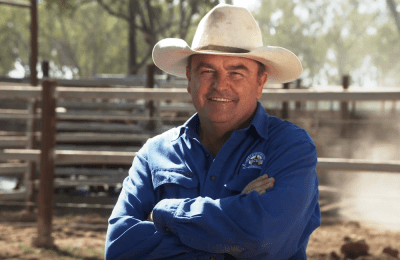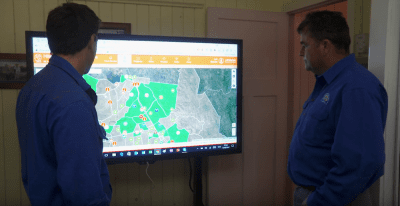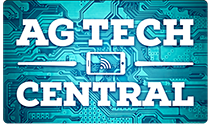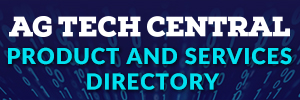Click above to watch short video explaining how digital data is being trialled by ACBH.
SENSORS, drones, satellites and a digital analytics dashboard are being trialled by a large cattle producing company to make more objective decisions and predictions around pasture management, stocking rates and cattle turnoff.
Australian Cattle and Beef Holdings (ACBH) is a joint venture between the Lee and Acton families and is part of the Australian Country Choice group, which owns the Cannon Hill processing plant in Brisbane, supplying beef to Coles supermarkets in Australia and export markets around the world.
The ACC Group runs 250,000 cattle on breeding and backgrounding properties stretching from Northern Queensland through Central Queensland and into Southern Queensland, where it also operates three feedlots with a combined capacity of 50,000 head.
Cattle are weaned in an average season between 180kg and 220kg and then backgrounded to weights of 365-385kg for feedlot entry in a dedicated supply chain geared to producing a precise and uniformly consistent-quality product for Coles.
‘Every step of the way we capture data’
 ACBH CEO Ben Dwyer told last week’s BeefUp forum in Miles that whole of life data is captured on every individual animal including breed type, dentition, weights at different stages of backgrounding and lot feeding, in addition to grading and carcase feedback from the abattoir.
ACBH CEO Ben Dwyer told last week’s BeefUp forum in Miles that whole of life data is captured on every individual animal including breed type, dentition, weights at different stages of backgrounding and lot feeding, in addition to grading and carcase feedback from the abattoir.
The meat eating quality feedback is a “pull through process” that is used to connect genetic and management decisions on property to customer requirements.
“Our aim is to produce a flatback early-maturing high-yielding animal for the end product, and we are very driven by the data that comes back from the meatworks on what genetic mix we will put into the cattle we breed,” Mr Dwyer said.
“With the closed loop information thread we have at carcase level we can tell what each animal has done for us from birth right through.
“One of the biggest drivers for us now through the data and feedback from the customer is our meat eating quality and the eating quality index.
“It is the real driver in our business of where we are going with in our genetics, because at the end of the day, if we deliver a poor piece of meat to the consumer and they don’t like it, we have to find something else to do.”
Mr Dwyer said the company was aiming to automate at least one set of yards on each backgrounding property for efficiency reasons, incorporating a pneumatic crush and scales and automated drafting systems.
One practical paradigm that had to be overcome was that, while automated systems had the potential to make cattle handling more efficient, those gain could be offset by the time required to capture data.
“The challenge is getting the team to adopt the data capture process so the technology works,” he explained. “They don’t mind if we put in new crushes and automatic drafting systems, but when you have to slow the system to capture data, that can be a hard hurdle or paradigm to get through with staff.”
Hitachi Data Dashboard
In addition to collecting and using whole of life data on cattle, ACBH is also trialling the use of using technology to increase data and improve decision making around pasture conditions and cattle management.
In collaboration with Hitachi and the MLA Donor Company (MDC), ACBH is running an on-farm pilot that takes data captured from its various properties via weather stations, soil moisture probes, water trough monitors, satellites and drones, and integrates that information into an analytics dashboard to support almost real time management decisions and forecasting.
Mr Dwyer said the data being captured is intended to provide objective information on not only how much grass the operation has in front of it at any given time, but the quality of that grass as well.
“We’re capturing information that helps us make decisions on pasture growth,” Mr Dwyer said.
“A lot of what we’re doing on the Hitachi dashboard project particularly with pasture is still in the very early stages so we don’t live by it at the moment, but we’re starting to make more and more forecasting decisions based on that process.”
 As part of the trial water levels of six watering points on Barkly Downs are being monitored remotely, with information shared via satellite to the digital dashboard.
As part of the trial water levels of six watering points on Barkly Downs are being monitored remotely, with information shared via satellite to the digital dashboard.
“There are 150 watering points on Barkly Downs so we’re just doing a trial on a small section at this stage,” Mr Dwyer said.
“But so far we’re quite impressed with the information we’re getting back. It comes through to us several times a day in the form of a text or an email, so it is very accurate and it is very timely.
“We’re trying to create more predicting and forecasting tools on our backgrounding properties to help us make better decisions on pasture which will help us make better decisions on livestock turnoff, timing and growth.”
The dashboard also incorporates all of the animal data collected by the operation, allowing managers to click on a paddock and to see how many cattle are in each paddock, what their weights are, which breeding property they have come from, and what date they entered the property.
Mr Dwyer said one of the major barriers to benefitting from technology was connectivity.
“Our biggest learning in the last 18 months as we tried to adopt technology into our business is that connectivity is everything,” he said.
“We have run into some really big brick walls where we have tried to link properties up and then we hit a connectivity issue, so we have a whole lot of data on farm and we can’t get to the next point.”


HAVE YOUR SAY